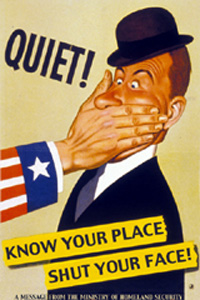mixmedia: all movie
all music
c-files portal
elbo.ws
flickr
hype machine
imdb
kcrw
myspace
facebook
pitchfork
tcm
hitfix
tv tattle
wfmu
youtube
nets: abc
bbc
c-span
cbs
cnet
cnn
espn
msnbc
npr
pbs
news: asia times
boston globe
cs monitor
financial times
guardian
haaretz
k-ridder
la times
ny dailynews
ny newsday
ny post
ny times
village voice
washington post
usa today
ref: amazon
citysearch
craigslist
ebay
bartleby
wikipedia
scitech:
digg
eureka
gizmodo
lifehacker
nat'l geog
new scientist
sci daily
wired
wires: alternet
google
memeorandum
my antiwar
political wire
rawstory
yahoo
zines: counterpunch
economist
harpers
nation
new yorker
ny mag
ny observer
nyr books
salon
slate
tnr
time
vanity fair
blogs: americablog
boing
crooks and liars
daily kos
eschaton
firedoglake
huffington post
hullabaloo
jesus general
metafilter
thinkprogress
tpm
glenn greenwald
wolcott
View current page
...more recent posts
ballpark frankness Unfortunately, the Giants and Jets don't seem to have gotten the memo about that second one. According to the Times, they’re negotiating to possibly sell the naming rights for their new Meadowlands stadium to Allianz, “a Munich-based insurer and financial services company with disturbing connections to Nazi Germany.”
burgundy wine
big mac attack That’s a long time ago, almost a quarter century, and tennis has changed, faded, become technological, become bland, and it might be hard for anyone younger than 35 or so to appreciate that McEnroe, as a tennis player, was fundamentally different than any other athlete of his era. He was the only athlete, in my mind, who came close to being a true genius at his game. Nicklaus putted with steel and hit qualitatively higher shots than the rest. Magic played point guard at 6-foot-9, and he had a brilliant sense of what was happening on the court around him. Montana understood physics, especially in the final moments, and he could throw parabolas that cleared linebackers fingers by millimeters and fell softly into receivers hands. Wade Boggs taught himself all the possibilities of Fenway Park and in 1985 and 1987 he rapped enough doubles off the Green Monster to hit .418 and .411 at home.
hearst news Patty Hearst was a rich man’s daughter, kidnapped for ransom by a group whose demands were delivered through public “communiqués” sent to radio stations. Clearly she would have made news in any era, but it took something more than the facts of her case, spectacular though they may have been, to account for the impact she had on the American public (between February 1974 and March 1976, she was on the cover of Newsweek seven times). The central question about her experience was also being asked in a million tiny dramas that were unfolding across the country—ruptures that turned on blue jeans and broken curfews and birth-control pills, rather than on joining a gang of armed revolutionaries: Had this well-tended and much-loved daughter really crossed over? And if she had, was she so far gone that even her own people might not want her back?
